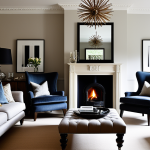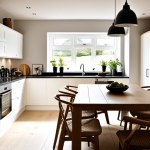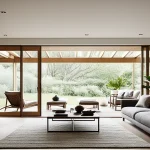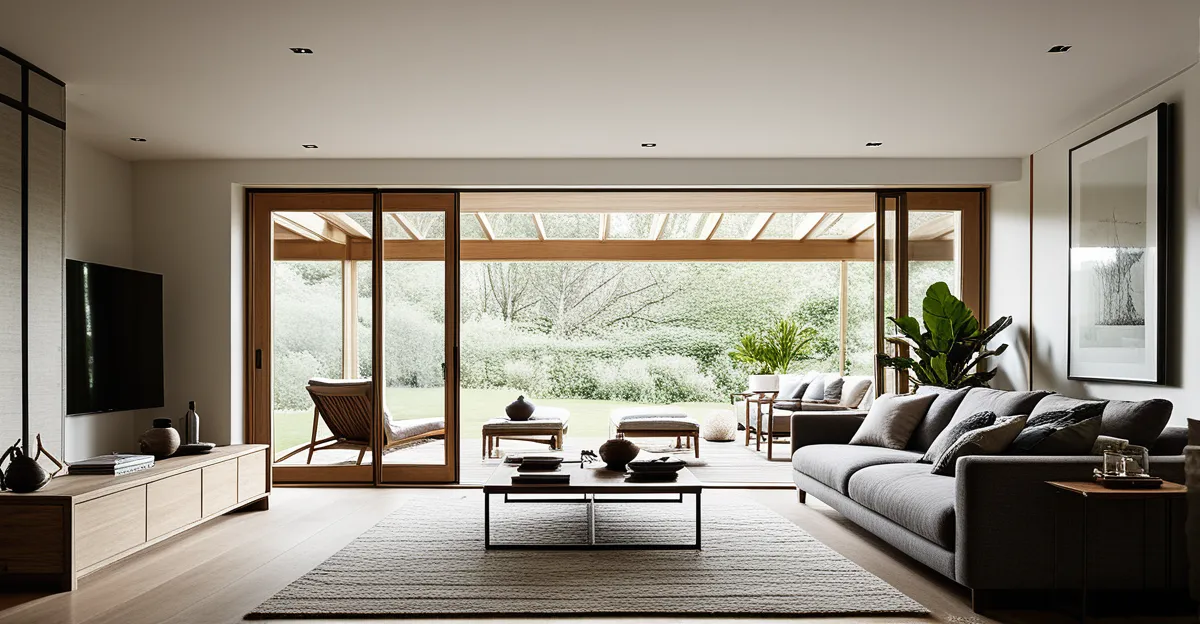Immediate Steps to Create a Relaxing Atmosphere
Creating a peaceful home environment begins with actionable tips that directly reduce visual and mental clutter. First, decluttering spaces is essential. Removing unnecessary items from commonly used areas minimizes visual stress and allows the mind to rest. A clear, tidy room naturally encourages calmness and helps maintain focus on relaxation.
Next, introducing calming color palettes significantly enhances tranquility. Soft shades such as muted blues, gentle greens, and warm neutrals work well to soothe the senses. These colors create a serene backdrop conducive to unwinding, offering a subtle psychological cue that the space is intended for relaxation.
This might interest you : How Can British Interior Design Influences Enhance Your Home’s Aesthetic?
Lighting also plays a crucial role. Incorporating soft, layered lighting—such as a combination of ambient, task, and accent lights—helps achieve a soothing effect. Unlike harsh overhead lights, warm-toned lamps or dimmable fixtures create a cozy glow that eases tension and sets a calm tone for the home. Combining these three actionable tips—decluttering, calming colors, and soft lighting—lays the foundation for a truly tranquil environment.
Enhancing Comfort with Textures and Furnishings
Adding soft textures and cozy furnishings is a powerful way to enhance comfort in your peaceful home environment. Plush textiles like velvet cushions, soft throws, and thick rugs provide tactile warmth that invites relaxation. These materials create a welcoming surface that soothes the senses on contact, reinforcing the calming home ideas you are cultivating.
Additional reading : How Can British Homeowners Create a Cosy Living Environment in Small Spaces?
Arranging furniture thoughtfully also contributes significantly to comfort enhancement in home spaces. Position seating to face natural light sources or include areas that encourage lounging and conversation. This not only improves the flow of the room but promotes a sense of ease and connection.
Incorporating additional elements such as cushions and throws not only adds layers of softness but helps foster a cozy ambiance. These accessories can be rotated seasonally or according to mood, making your home feel both inviting and adaptable. Consistently using these cozy furnishings and soft textures will deepen the tranquility and comfort found throughout your home, perfectly complementing earlier steps like decluttering and soft lighting.
Integrating Nature for a Soothing Effect
Bringing natural elements into your living space is a highly effective way to cultivate a truly peaceful home environment. One of the most accessible and impactful methods is adding indoor plants. These green companions not only brighten rooms visually but also improve air quality and reduce stress levels. Research confirms that interacting with or simply viewing plants can lower heart rates and create a calmer mental state.
Incorporating natural materials such as wood, stone, or woven fibers further strengthens this connection to nature. A wooden coffee table, stone accents, or rattan baskets introduce tactile and visual textures that evoke the outdoors. These elements harmonize beautifully with calming home ideas like soft color palettes and cozy furnishings, creating a balanced sensory experience.
Maximizing natural light is another cornerstone of this nature-inspired approach. Sunlight provides vitamin D, lifts mood, and visually enlarges spaces, making them feel more open and inviting. Positioning seating near windows or choosing translucent curtains ensures your home benefits from this gentle illumination. Combining indoor plants, natural materials, and ample daylight turns ordinary rooms into a serene home oasis, perfectly supporting relaxation and well-being.
Sensory Elements that Promote Relaxation
Adding sensory elements is a vital step in crafting a truly peaceful home environment. Among the most effective actionable tips is the use of aromatherapy. Essential oils or scented candles with calming scents—such as lavender, chamomile, or sandalwood—are known to reduce anxiety and promote restful moods. Their gentle aromas subtly influence the atmosphere, making the home feel inviting and tranquil.
Another critical aspect of relaxing home ideas is managing the auditory environment. Selecting gentle background music or natural soundscapes, like rain or ocean waves, can mask disruptive noises and foster calm. This practice helps create a consistent auditory backdrop that supports relaxation, concentration, or sleep, depending on the chosen sounds.
Noise pollution often disrupts relaxation, so creating quiet zones within the home is equally important. These areas, shielded from external or household noise, serve as sanctuaries where one can unwind without sensory overload. Combining aromatherapy, soothing sounds, and quiet zones reinforces a serene home environment by engaging multiple senses in harmony. This sensory approach complements earlier steps such as calming color palettes or natural elements, rounding out the peaceful atmosphere.
Step-by-Step Guide to Your Tranquil Home Makeover
Transforming your space into a peaceful home environment requires a clear, structured approach. A step-by-step home guide helps you navigate this process efficiently, making the tranquil home transformation manageable and rewarding. Start by creating a personalised relaxation plan, taking into account your lifestyle, preferences, and the areas of your home that most need attention. This plan should include specific, actionable tips like decluttering, selecting calming colors, or incorporating cozy furnishings to build your calming home ideas into daily practice.
Next, prioritise key areas such as bedrooms and living rooms. These spaces serve as primary zones for rest and socialisation, so focusing your efforts here maximises the impact of your relaxing home ideas. For instance, enhance comfort with soft textures and arranging furniture to improve flow and ease, while layering soft lighting to maintain a soothing atmosphere.
Tracking progress with before-and-after snapshots is an effective way to monitor your tranquil home transformation. This visual method not only demonstrates how small changes accumulate but also motivates ongoing improvement. Documenting adjustments—from the introduction of indoor plants to the addition of aromatherapy—reinforces your commitment to sustaining a serene and inviting peaceful home environment throughout your makeover journey.
Product Recommendations and Visual Inspiration
Explore a selection of home oasis products designed to amplify your peaceful home environment. Prioritising items that combine aesthetic appeal with functionality maximises their impact on your relaxation journey. For example, soft-textured cushions and plush throws enhance comfort while doubling as attractive décor pieces, reinforcing your calming home ideas.
When selecting relaxing home décor, consider natural materials such as wood and stone, which seamlessly link with nature-inspired elements. These durable, visually pleasing materials add warmth and texture, contributing to a tranquil atmosphere. Choose lamps and lighting fixtures offering adjustable brightness to support soft, layered lighting techniques crucial for a soothing effect.
Visual inspiration plays a pivotal role in understanding how various elements merge within a space. Before-and-after snapshots of transformed rooms illustrate how decluttering, layering textures, and integrating natural elements create serene, inviting atmospheres. These examples provide practical models to guide your tranquil home transformation, making it easier to envision results and remain motivated throughout your makeover.
In summary, carefully curated home oasis products, combined with insightful visual examples, form essential tools. Employ these resources to enrich your relaxing home décor and advance your peaceful home environment with confidence and style.











